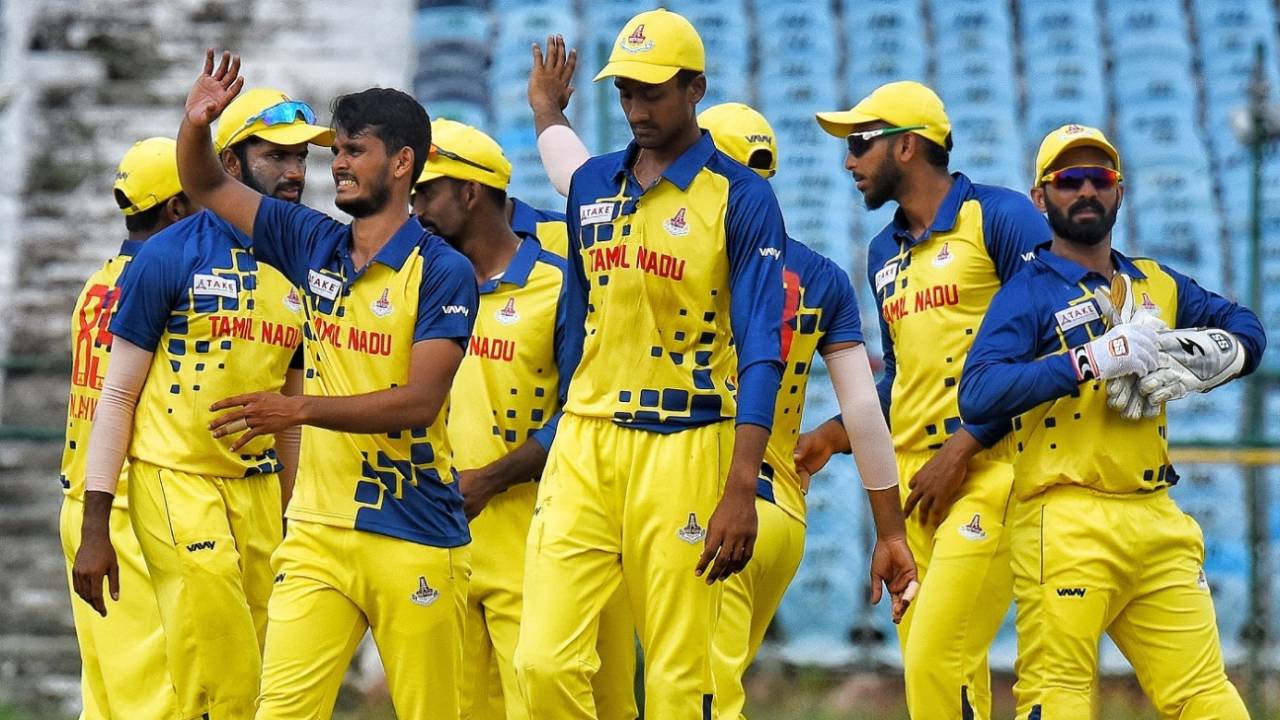The Vijay Hazare Trophy 2019-20 has flown largely under the radar for cricket followers. It has overlapped almost perfectly with South Africa's tour of India, the matches were not telecast or streamed, and wet weather marred games in three of the four groups.
The worst affected has been group B, scheduled in Vadodara. The tournament started on September 24, but the
first completed match in the city was on October 2, that too shortened to 21 overs a side. The first time every game scheduled on a particular day could be played to completion was on October 7, with the rains having eased off in the city and a
rescheduled reschedule of matches being rushed through.
Ordinarily, poor weather wouldn't be too much of a problem in a long tournament but the Vijay Hazare Trophy went through a restructure, which has created some complications.
What is this restructure?
A new points system was adopted in 2018-19 as a response to the influx of nine new teams, which took the total up to 37. With the addition of Chandigarh this year, it's 38 now. There are nine each in groups A and B, and ten each in C and the plate group D.
The Plate group toppers, along with the top two from group C, qualify for the quarter-finals. Groups A and B, meanwhile, form a combined table and the top five qualify from there. So, while teams in A and B play only within their groups, they will in effect be competing against teams from two groups.
The same structure exists for the Ranji Trophy, but since that is played across the country, there is much less chance of a rain-hit city making too much of a difference.
How exactly are Group B teams affected more?
You can only take two points for a washout, but if you are a strong team, you would fancy winning more often than losing, and therefore, earning four points from a game. In effect, the stronger sides in Group B are competing with the stronger sides in Group A for quarter-final spots, but while Karnataka, for example, are smashing their way through in A, the likes of Delhi in group B have had three washouts out of seven matches.
Also, the frequent rain has made conditions in those venues tricky. The batting average (23.05) and run rate (4.36) in Group B - theoretically one of the stronger groups - is the lowest out of the four groups, largely due to batting being difficult in the aftermath of the rain.
Plate group matches in Dehradun were also hit hard, but the group B teams have suffered more because they had to compete not just with themselves but also with oppositions from group A, where matches weren't rained out as often.
What's the solution?
There isn't one for this year. The BCCI has done what it could by rescheduling a bunch of matches. There was a
revised schedule drawn up, which left room for further tweaks. The league stage was scheduled to end on October 16, but a reserve day was added. In the original schedule, group B's last game was on October 13, but they will now play till October 17.
One of the options going forward could be to not have different groups mapped on to the same table for qualification. But that might lead to a whole other set of complications - organising a tournament with 38 teams isn't easy.
What complications?
The obvious way is to simply have four groups, with the top two in each making it to the quarter-finals. But the vast disparity in quality between the rookie teams and the established ones makes this unworkable. Mumbai, say, having a couple of teams from the north-east in their group, would not only lead to unequal contests but possibly unfair points and net run-rate situations.
And then, what if one of the stronger teams had a match against one of the weaker sides washed out? While the others in the group would have filled their boots with goodies, one team would have suffered.
It is this unevenness in quality that led to a rather creative solution by the BCCI in the first place. The board's method right now is sound in principle. But, as this year's tournament has shown, mapping two different groups on the same points table can go awry if the tournament is held hostage by the weather.
Saurabh Somani is an assistant editor at ESPNcricinfo
